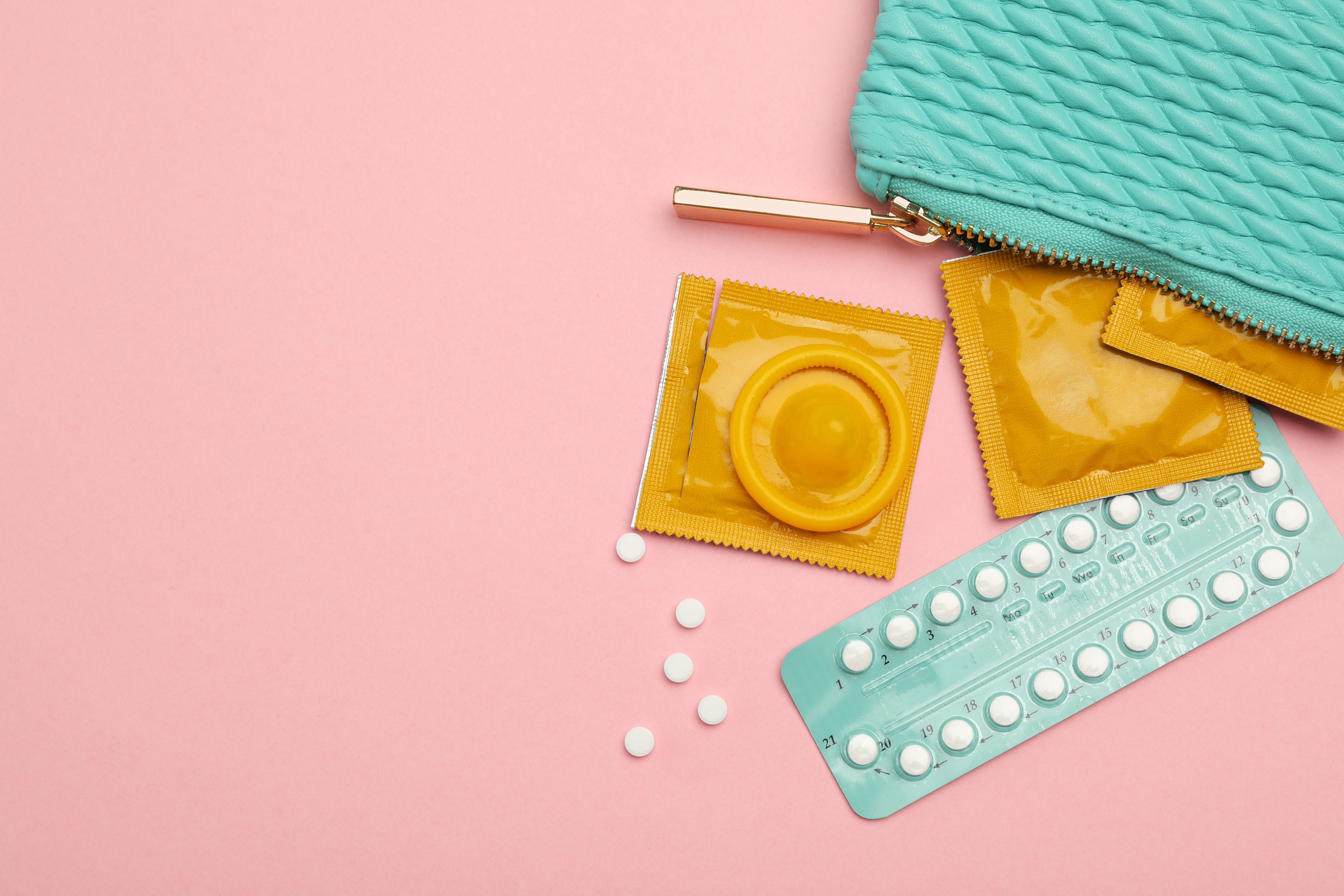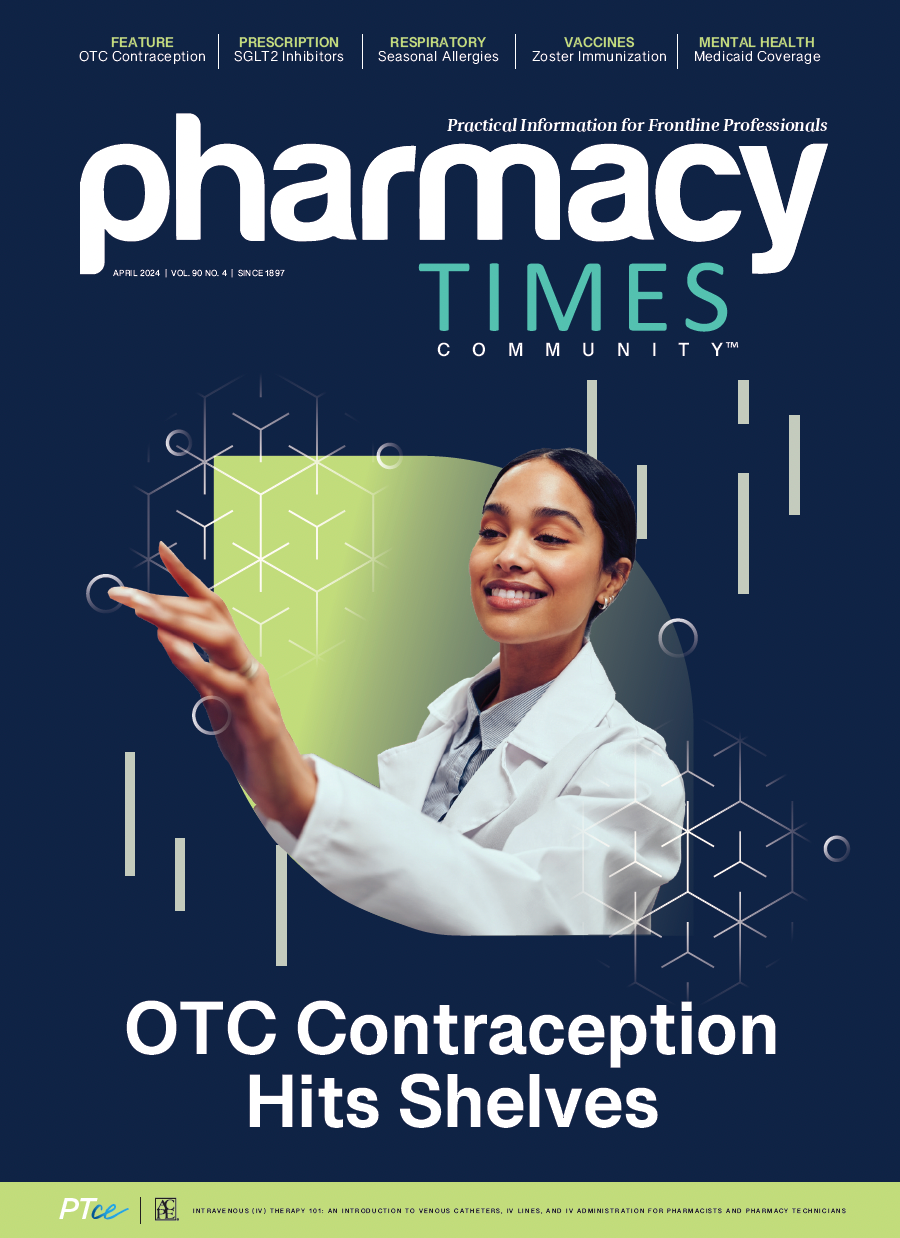OTC Contraception Opens New Opportunities for Counseling Patients
With the first FDA-approved option hitting shelves soon, pharmacists can advise patients on the best methods to prevent pregnancy
Contraception can prevent pregnancy in 3 ways: preventing the ovary from releasing an egg, stopping the sperm from fertilizing the egg, or keeping the fertilized egg from implanting in the uterus.
Image credit: New Africa | stock.adobe.com

Contraception has been practiced for thousands of years. In 1855, after accidentally creating rubber, Charles Goodyear used it to produce the first rubber condom.1
On July 13, 2023, the FDA announced its approval of Opill, the first daily oral contraceptive available without a prescription in the United States.2 This OTC medication contains 0.075 mg of norgestrel.3 Opill recently began shipping and will be available at most major retailers.4
The efficacy of norgestrel was established in 1973 with the initial approval for prescription use. Studies of Opill’s drug facts label showed that consumers had a high understanding of the information and instructions. Patients should be advised to take Opill at the same time each day to promote efficacy. Some drug-drug interactions, including with carbamazepine, barbiturates, rifampin, efavirenz, bosentan, and herbal medications containing St John’s wort, can result in decreased efficacy.5
The most common adverse events with Opill include irregular bleeding, headaches, dizziness, nausea, increased appetite, abdominal pain, cramps, and bloating.5
The availability of an OTC birth control pill could reduce barriers for patients by allowing them to obtain contraception without first seeing a health care provider. Nearly half of the 6.1 million pregnancies annually in the United States are unintended, according to FDA data, and unintended pregnancies are linked with negative maternal and perinatal outcomes such as reduced likelihood of early prenatal care, increased risk of preterm delivery, and adverse neonatal, developmental, and child health outcomes.5
Patients should be advised to take this medication at the same time every day and to read the drug facts label and consumer information leaflet to learn the steps to take if doses are missed. Patients with any history of breast cancer should not take this medication.3
In addition to condoms, there are many OTC contraceptive options to choose from. Most of these use a barrier method, but some are hormonal. Understanding patients’ unique needs is vital to making the best, most effective recommendations.
BARRIER METHODS
Barrier methods of contraception are designed to keep sperm from reaching the egg.6 These include condoms, sponges, and spermicide.
Condoms are available in both male and female versions. The male condom is a thin cover that fits over the penis and acts to prevent sperm from reaching the uterus. These are made from animal skin, latex rubber, or polyurethane. The condom is currently the only OTC method of birth control available for men.6
Male condoms made from latex or polyurethane also protect against sexually transmitted diseases (STDs). Approximately 80% of all condoms made in the United States are latex condoms. When used properly, male condoms are approximately 95% effective at preventing pregnancy; that protection drops to 85% when not used properly.7
Condoms made from animal skin, also known as natural membrane condoms, provide a more natural feeling during intercourse and are a good alternative when either partner has a latex allergy. Animal skin condoms are as effective as latex condoms at preventing pregnancy but are porous enough to allow bacteria and viruses to penetrate, so they do not prevent STDs. Natural membrane condoms are more expensive and account for approximately 5% of condoms produced in the US.7
There are several key points pharmacists should tell patients when advising them about condom selection and use. Patients should be advised not to use brittle, sticky, or discolored condoms, and not to use condoms if the package is damaged because the product may also be damaged. Condoms should also not be used with a petroleum-based lubricant, which can break down the material used in some condoms.7
Female condoms are made from polyurethane or nitrile and protect against pregnancy and STDs, although the protection against STDs is not quite as effective as that of male condoms. Female condoms fit inside the vagina and have a ring on either side. One ring is inserted to fit over the cervix and the other rests outside the vagina and covers the vulva.4 When used correctly, the female condom is 95% effective.8
The same caveats to using a male condom also apply to the female condom. Patients should not use both a female condom and a male condom at the same time because this can cause enough friction to render both ineffective.8 If a condom breaks or dislodges, patients should be advised to insert spermicide and contact a health care provider to obtain emergency contraception.
Contraceptive sponges are soft sponges covered with spermicide. They are inserted vaginally up against the cervix up to 24 hours before intercourse and must be left in place for 6 to 8 hours after intercourse.9 When used properly, vaginal sponges are 88% to 91% effective. If used improperly (used, but not perfectly every time), the effectiveness drops to 75% to 80%. They work best in patients who have never given birth.9
Vaginal sponges should not be used during menstruation or a vaginal infection. They should not be used if a sensitivity develops or shortly after an abortion, miscarriage, or birth. Sponges may be difficult to remove and, if forgotten, may cause toxic shock syndrome.9
Spermicide is a chemical, usually nonoxynol-9, that inactivates sperm when it is inserted high in the vagina, close to the cervix. This product is available as foam, cream, gel, film, and suppository.9 Spermicide should be inserted 10 to 15 minutes prior to intercourse but it is effective for only 1 hour after insertion. If more than 1 hour passes, spermicide should be reinserted. Do not attempt to remove spermicide before 6 hours after insertion.9
Spermicide alone is not a very effective form of birth control. It has a 72% to 82% effectiveness rate, depending on how well it is used. Spermicides are often coupled with another form of contraception to increase protection.10 Frequent use of spermicides may increase the risk of vaginal irritation, leading to an increased risk of transmission of HIV and other infections.11
EMERGENCY CONTRACEPTION
Emergency contraception (EC) is available as oral tablets for those who have had unprotected intercourse or whose method of birth control has failed. The active ingredient is levonorgestrel, a progestin-only tablet available as a 2-dose, 0.75-mg regimen taken 12 hours apart and a single-dose, 1.5-mg regimen.12 Oral emergency contraceptive is available without a prescription for patients 17 years and older. Importantly, emergency contraceptive pills work by preventing or delaying egg release from the ovaries. If a fertilized egg has already implanted in the uterus, EC will not stop or harm the pregnancy.12
Adverse effects from EC pills are uncommon and resolve in a short period of time. If vomiting occurs within 2 hours of ingestion, the dose should be repeated.13
References
1. Charles Nelson Goodyear (1800-1860). Museum of Contraception and Abortion. Accessed January 31, 2024. https://muvs.org/en/topics/pioneers/charles-goodyear-1800-1860-en/
2. FDA approves first nonprescription daily oral contraceptive. News release. FDA. July 13, 2023. Accessed February 11, 2024. https://www.fda.gov/news-events/press-announcements/fda-approves-first-nonprescription-daily-oral-contraceptive
3. Opill. Prescribing information. Perrigo; 2023. Updated January 16, 2024. Accessed January 31, 2024. https://www.fda.gov/drugs/postmarket-drug-safety-information-patients-and-providers/opill-0075mg-oral-norgestrel-tablet-information
4. Introducing Opill. Opill.com. Accessed March 11, 2024. https://opill.com/?gad_source=1&gclid=CjwKCAjw17qvBhBrEiwA1rU9wzrkpVuhv5yCgEERswKk7tM9cWTgfoeNo3_YSyQYHu_cVCLB3P_vghoCnPIQAvD_BwE
5. Antrim A. FDA approves first nonprescription daily birth control pill. Pharmacy Times. July 13, 2023. Accessed March 11, 2024. https://www.pharmacytimes.com/view/fda-approves-first-nonprescription-daily-birth-control-pill
6. Barrier methods of birth control: spermicide, condom, sponge, diaphragm, and cervical cap. American College of Obstetricians and Gynecologists. Updated April 2022. Accessed January 31, 2024. https://www.acog.org/womens-health/faqs/barrier-methods-of-birth-control-spermicide-condom-sponge-diaphragm-and-cervical-cap
7. Santos-Longhurst A. Lambskin condoms: what you should know. Healthline. Updated June 30, 2023. Accessed February 8, 2024. https://www.healthline.com/health/lambskin-condoms
8. Female condoms. MedlinePlus. Reviewed January 10, 2022. Accessed February 8, 2024. https://medlineplus.gov/ency/article/004002.htm
9. Vaginal sponge and spermicides. MedlinePlus. January 10, 2022. Accessed February 8, 2024. https://medlineplus.gov/ency/article/004003.htm
10. Spermicides. Center for Young Women’s Health. Updated November 8, 2022. Accessed February 8, 2024. https://youngwomenshealth.org/guides/spermicides/
11. Nonoxynol-9 ineffective in preventing HIV infection. News release. World Health Organization. June 28, 2002. Accessed February 8, 2024. https://www.who.int/news/item/28-06-2002-nonoxynol-9-ineffective-in-preventing-hiv-infection
12. Emergency contraception. US Department of Health & Human Services Office on Women’s Health. Updated January 6, 2023. Accessed February 8, 2024. https://www.womenshealth.gov/a-z-topics/emergency-contraception
13. Emergency Contraception. World Health Organization. November 9, 2021. Accessed February 8, 2024. https://www.who.int/news-room/fact-sheets/detail/emergency-contraception#:~:text=Safety,normally%20resolve%20without%20further%20medications

